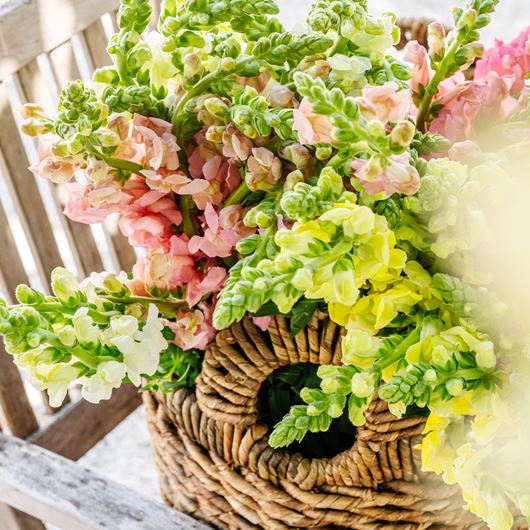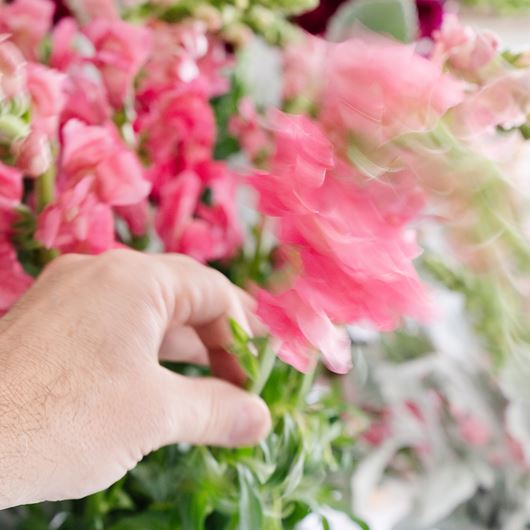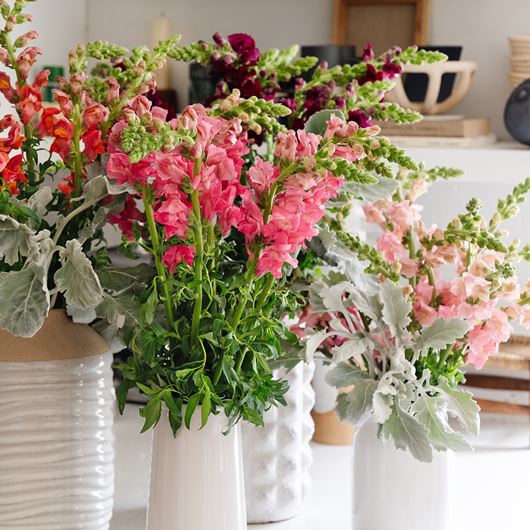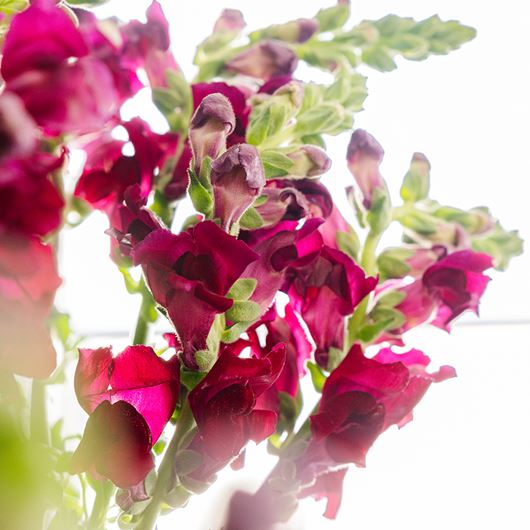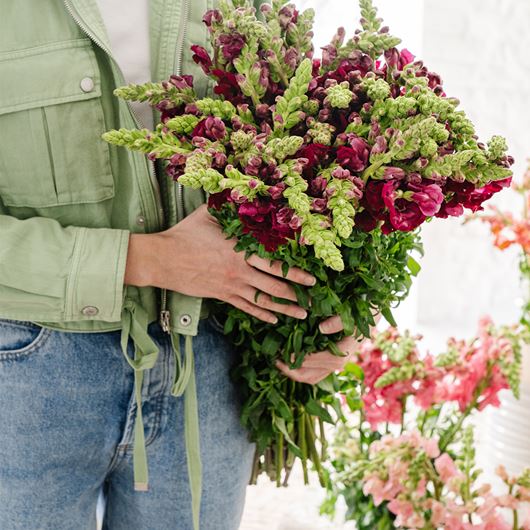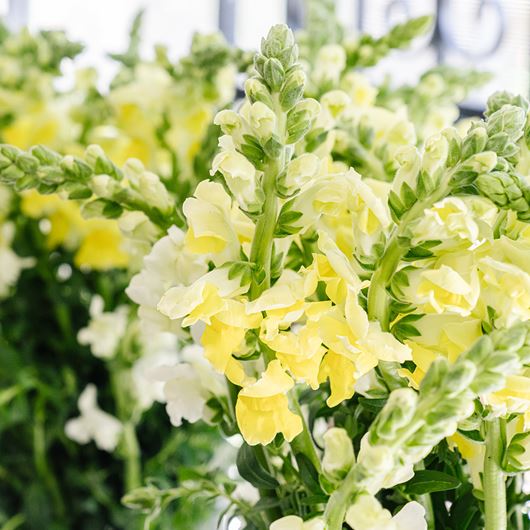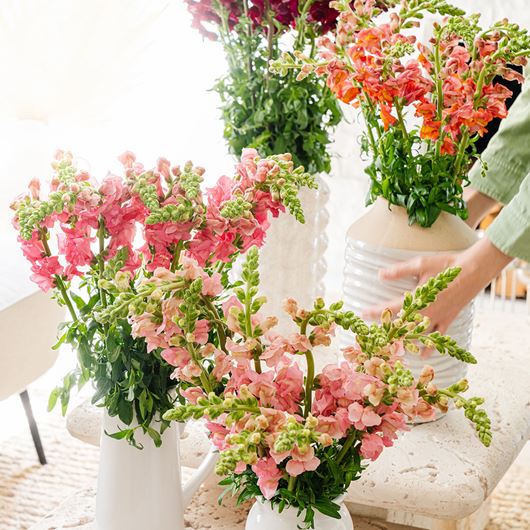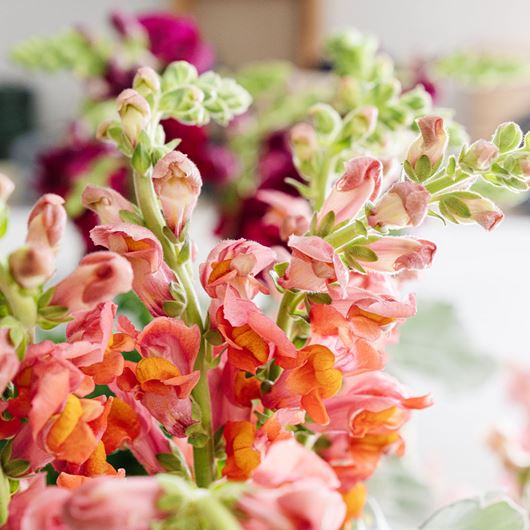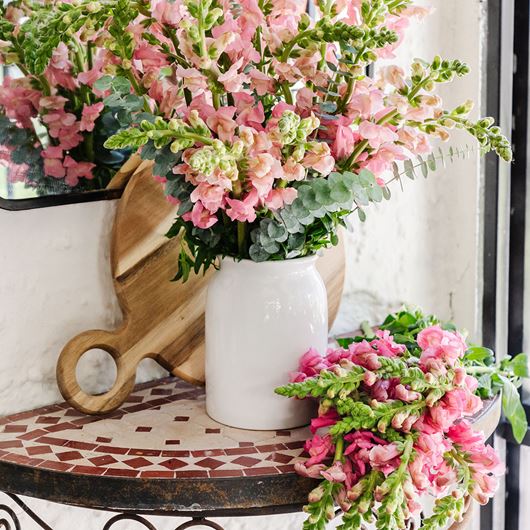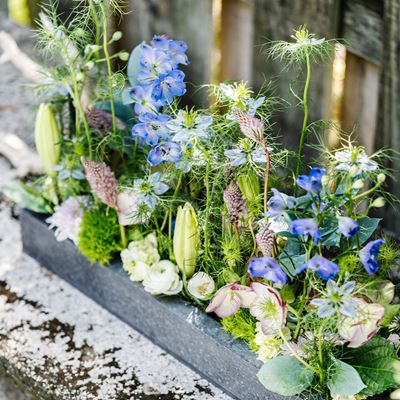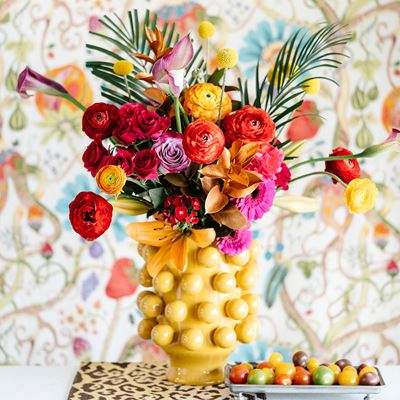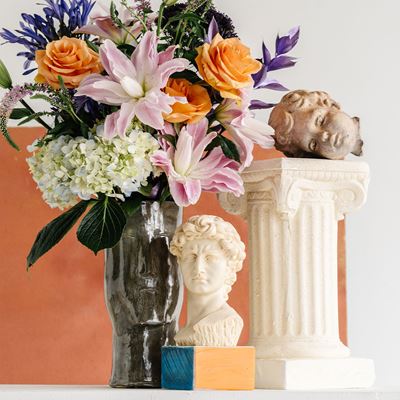Completing our 2023 lookbook series, our sixth and final trend, ATMOSPHERIC, pays homage to our planet's habitats at large. This trending macro view gathers an immersive palette of cool hues, borrowed from the oceans and forests, and pairs it with glowing bright white.
Discover the Curious Origins of Snapdragons (Not to Worry, They Don't Actually Bite)
Nothing captures youthful joy like snapdragons. The common name, snapdragon, draws on the game of first squeezing the corners of the flower's "mouth" to open it wide, and reveal "flames" of contrasting color and its lashing stamen "tongue," and then watching the blossom snap shut when released.
These versatile bestsellers grow in spikes, each bursting with 6–15 fuzzy, tube-shaped flowers that resemble puffy lips, to the delight of bees and children everywhere. Like most linear blooms, snapdragons mature and open from the bottom up. Their individual flower heads have a very distinctive form; its petals are fused into a hood-like shape, which upon close inspection, resembles a dragon's nose.
The flower's mouth-like form inspired both its botanical and common names. The Greek words "anti" (meaning similar to) and "rhis" (meaning snout or nose), plus the Latin words "majus" (meaning large) signifies that Antirrhinum majus translates as looks like a big snout.
Available in a variety of sizes and intensely saturated colors, snapdragons' many cultivars are grouped into three main forms: dwarf, intermediate and tall. The dwarf versions are most popular as garden flowers; the intermediate and tall cultivars are grown commercially. Florist snapdragon spikes range from 14–30" (36–76 cm) tall, with blossoms ranging from ½–1 ½" (1.3–4 cm) in size.
Snapdragons may be dried using a drying agent such as silica gel or glycerine. They are both phototropic (bending toward light sources) and geotropic (responding to gravity). All snapdragons are ethylene sensitive, but newer hybrids are less susceptible than older cultivars. Though some garden cultivars are fragrant, most florist snapdragons do not give off much scent.
FUN FACTS
• International common names for snapdragons include "rabbit's lips" in Asia, "dragon's mouth'' in Spain, and "lion's mouth" in Germany, Italy and the Netherlands.
• Snapdragons are one of the top-selling florist flowers worldwide, as well as a perennial garden favorite.
• A member of the Plantaginaceae (plantain) family, snapdragons are related to foxglove (Digitalis) and speedwell (Veronica).
• Unlike their cousin, the foxglove, snapdragons have not been found useful in folk or modern medicine. Instead, they have been cultivated since the 18th century for their ornamental value—meaning, their beauty alone! No hybrids existed until the mid-20th century; today, there are hundreds.
• In folklore, snapdragons were thought to offer protection from witchcraft and aging. This may have come from the shape of the plants' dry seed pod, which bears an eerie resemblance to a miniature skull.
• Also according to folklore, carrying a hidden snapdragon would make the bearer appear charming and gracious.
• Essential oils and flower essences derived from snapdragons are used in aromatherapy and homeopathy to promote relaxation.
